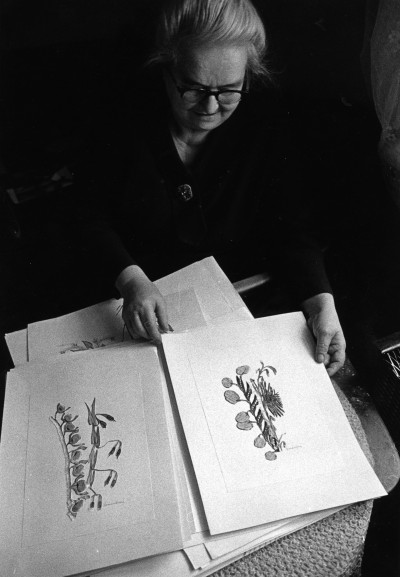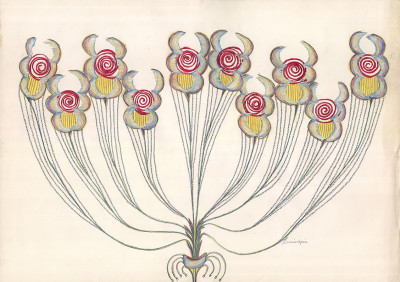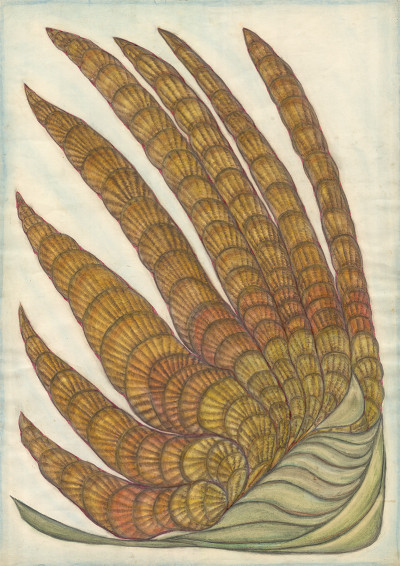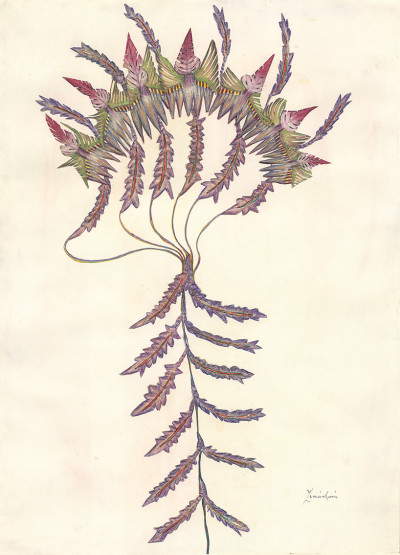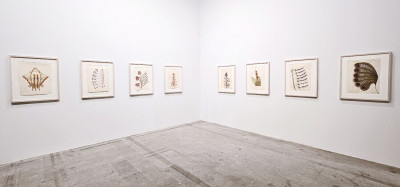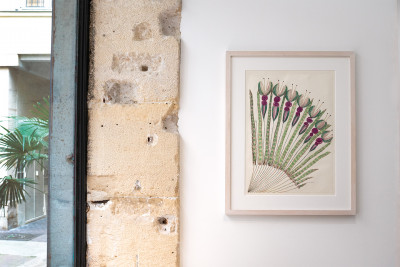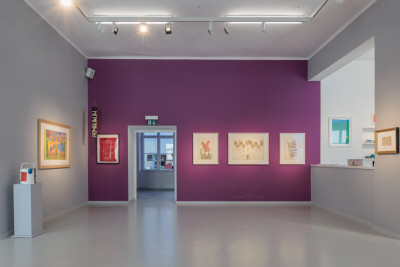Anna Zemánková
It was in the early 1960s that this humble Moravian woman began producing a body of work for which her background had not prepared her, responding strikingly to impulses from deep within. Thus, at a time when the demons of the night still contended with the seminal hues of dawn, she would, in her mind, pick strange flowers and bring them to life on paper. Anna Zemánková is now a well-established figure in Art Brut, to the point that she was honored at the Venice Biennale in 2013, before a significant collection of her works was acquired by the Centre Pompidou, followed by the Boston Museum of Fine Arts in 2020. In 2024, her works have been presented at the Venice Biennale for the second time, under the curatorship of Adriano Pedrosa.
Born in 1908 in Olomouc, Moravia, Anna showed a keen interest in drawing from an early age, but her father did not understand her: she became a dental assistant.
In 1933, she married an officer, stopped working, and devoted herself fully to her home. The couple had three sons—the first of whom died at the age of 4—and, later, a daughter. Her role as a loving mother keeps her fully occupied. After the Second World War, the family moved to Prague, in 1950, after which, Anna fell into depression and, because of her diabetes, had both her legs amputated. At over 50—perhaps rekindling her childhood dream—Anna began to produce daily spontaneous drawings of vegetal inspiration between 4 am and 7 am, a moment she feels she captures magnetic forces.
At the beginning of the artwork, she is unaware of its final form: “Everything works by itself,” “[…] no need to think.” This vegetation without roots or humus, these blooms sometimes mental, sometimes organic, from which abyssal herbarium do they spring forth? To which realm do they belong? Yet, akin to the works of Séraphine de Senlis, are they still flowers? Are they not already fruits? Fleshy with the haunting juices, gorged with the impulse of a woman who, giving herself over to an unresolved mystery, simply says, “I live.”
These strikingly detailed works, driven by a singular rhythm of spirals, arabesques, and geometric shapes, have made Anna a major figure in the art brut movement. Her work is represented in the most prestigious collections, culminating in the international pavilion at the 2013 Venice Biennale.

Texts : Terezie Zemánková and Manuel Anceau
Foreword : Christian Berst
Catalog published to mark the exhibition Anna Zemánková : hortus deliciarum #2, from June, 17 to July 18, 2021.
OUT OF STOCK

